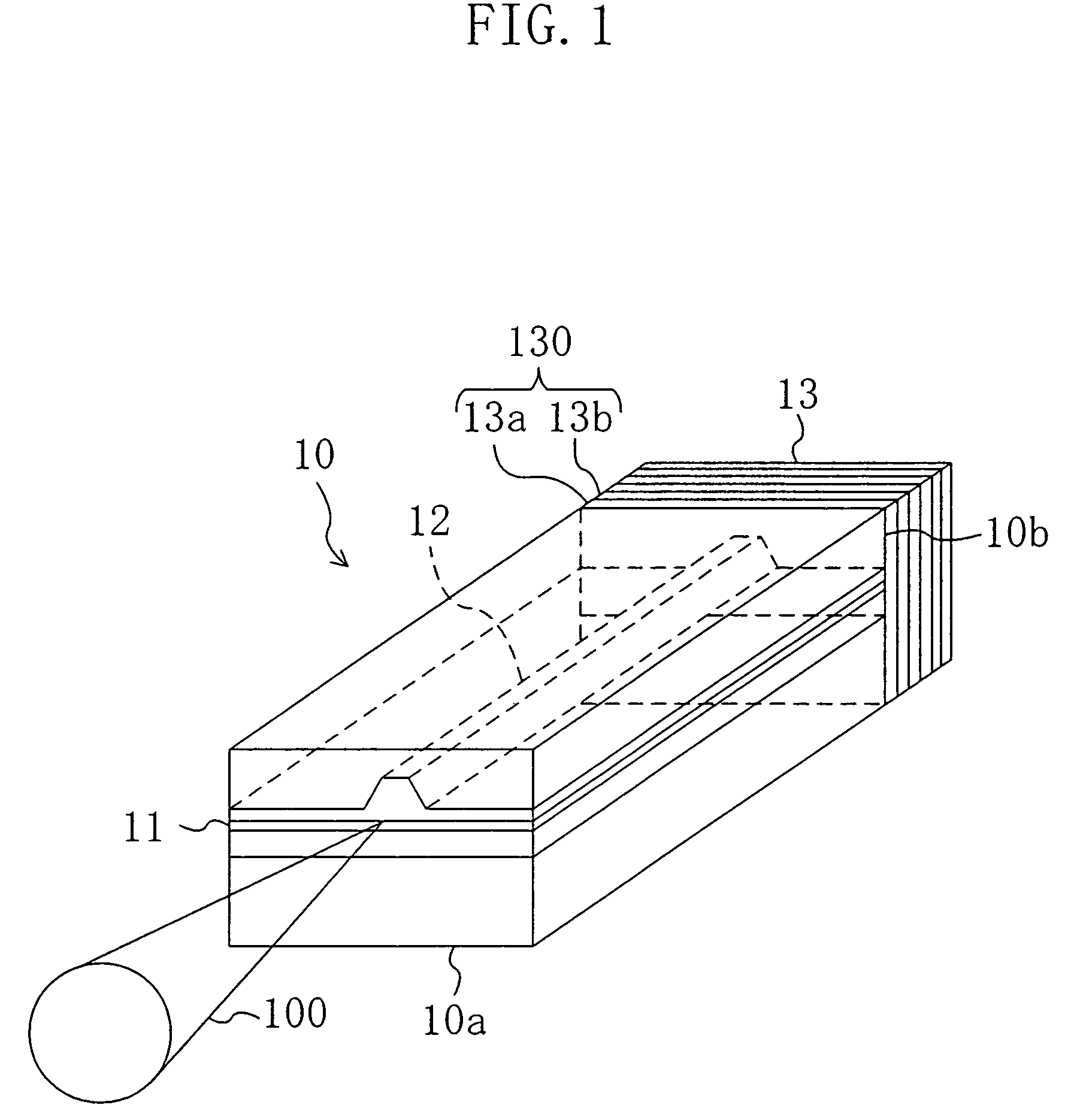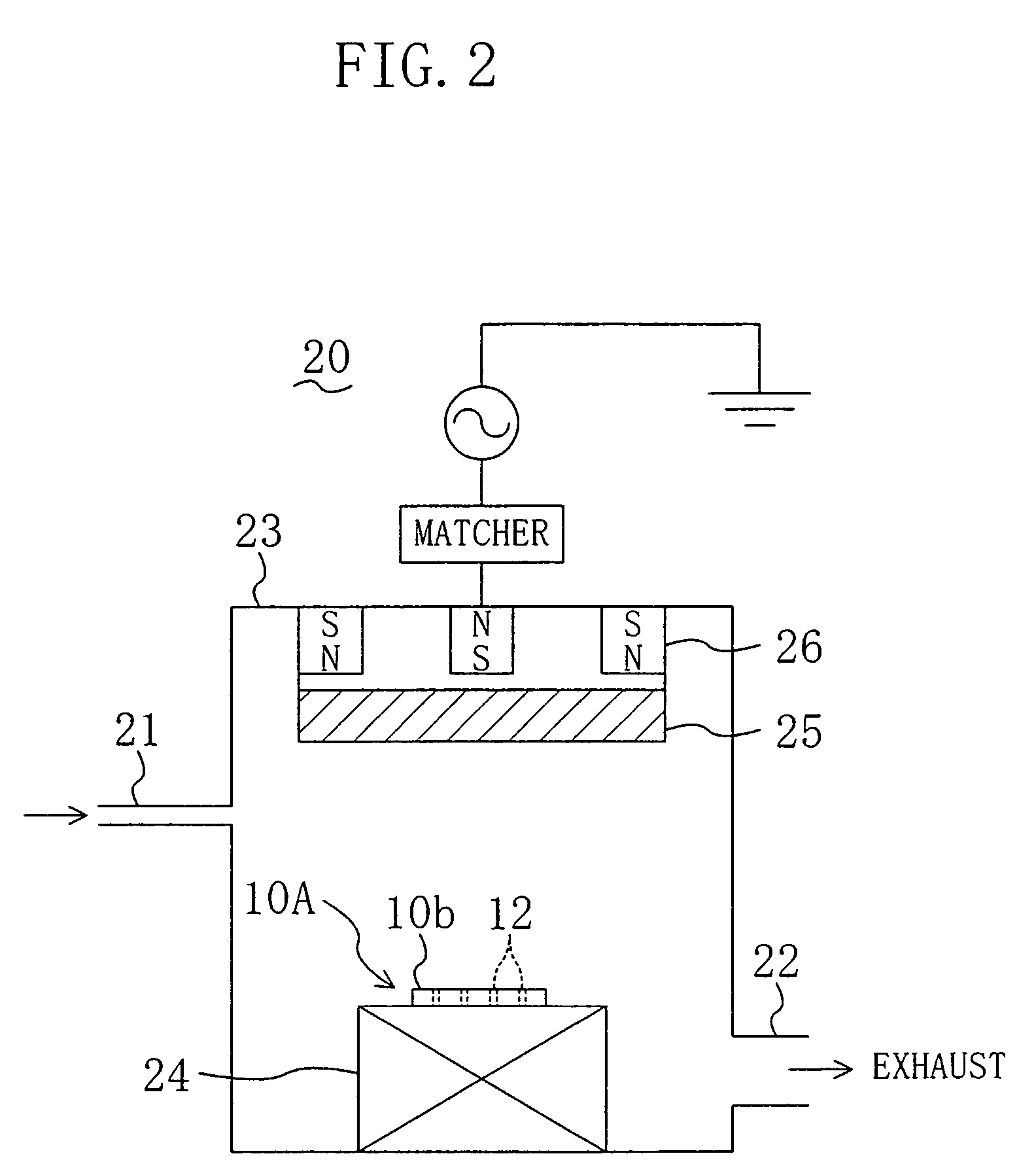Semiconductor laser device, method for fabricating the same, and optical disk apparatus
a semiconductor laser and laser device technology, applied in semiconductor lasers, optical resonator shapes and construction, optical beam sources, etc., can solve the problems of reducing device reliability, meeting the demand of increasing laser device output power, dioxide and titanium oxide films, etc., to increase output power, reduce wavelength, and improve the effect of semiconductor laser devices
- Summary
- Abstract
- Description
- Claims
- Application Information
AI Technical Summary
Benefits of technology
Problems solved by technology
Method used
Image
Examples
embodiment 1
[0041]A first embodiment of the present invention will be described with reference to the drawings.
[0042]FIG. 1 shows a semiconductor laser device according to the first embodiment of the present invention, which is a violet-light-emitting semiconductor laser device with an oscillation wavelength of about 400 nm.
[0043]As shown in FIG. 1, the semiconductor laser device 10 includes a resonant cavity 12 in which a quantum well active layer 11 made up of barrier layers of gallium nitride (GaN), for example, and well layers of indium gallium nitride (InGaN), for example, is vertically sandwiched between at least light guide layers of n- and p-type aluminum gallium nitride (AlGaN), for example.
[0044]An end facet reflective film 13 is formed on a reflective end facet 10b opposite to a light-emitting end facet 10a for laser light 100 in the resonant cavity 12.
[0045]The end facet reflective film 13 has a structure including a plurality of unit reflective films 130, each of which is made up o...
embodiment 2
[0076]Hereinafter, a second embodiment of the present invention will be described.
[0077]In the first embodiment described above, niobium oxide is used for the high-refractive-index film that can cope with the demand for decreased wavelength. On the other hand, the second embodiment is adapted to cope with the demand for increasing the output power of a semiconductor laser device with a long oscillation wavelength covering infrared to red parts of the spectrum.
[0078]For example, a laser device for a 16×CD-R, on which data can be written only once sixteen times faster than normal speed, should have an optical output of 150 mW in a pulsed drive mode at a duty cycle of 50% and 110 mw in a CW drive mode. Thus, the known end facet reflective film, which is made up of a low-refractive-index film of silicon dioxide and a high-refractive-index film of amorphous silicon, cannot attain sufficient reliability.
[0079]In view of this, in the second embodiment, first and second dielectric layers fo...
embodiment 3
[0090]Hereinafter, a third embodiment of the present invention will be described with reference to the drawing.
[0091]FIG. 6 schematically shows an arrangement for an optical disk apparatus according to the third embodiment of the present invention. In FIG. 6, in the optical disk apparatus according to the third embodiment, the semiconductor laser device of the present invention, i.e., the violet-light-emitting semiconductor laser device according to the first embodiment, is used as a light-emitter 41 of the optical disk apparatus.
[0092]As shown in FIG. 6, in the optical disk apparatus, the light-emitting end facet of the semiconductor laser device as the light-emitter 41 and the data-retaining surface of the optical disk 50 as a storage medium, on which desired data has been recorded, are disposed to face each other. A condensing optical system 40 is placed between the light-emitter 41 and the optical disk 50.
[0093]In the condensing optical system 40, collimator lens 42 that changes...
PUM
| Property | Measurement | Unit |
|---|---|---|
| absorption coefficient | aaaaa | aaaaa |
| reflectance | aaaaa | aaaaa |
| absorption coefficient | aaaaa | aaaaa |
Abstract
Description
Claims
Application Information
 Login to view more
Login to view more - R&D Engineer
- R&D Manager
- IP Professional
- Industry Leading Data Capabilities
- Powerful AI technology
- Patent DNA Extraction
Browse by: Latest US Patents, China's latest patents, Technical Efficacy Thesaurus, Application Domain, Technology Topic.
© 2024 PatSnap. All rights reserved.Legal|Privacy policy|Modern Slavery Act Transparency Statement|Sitemap



